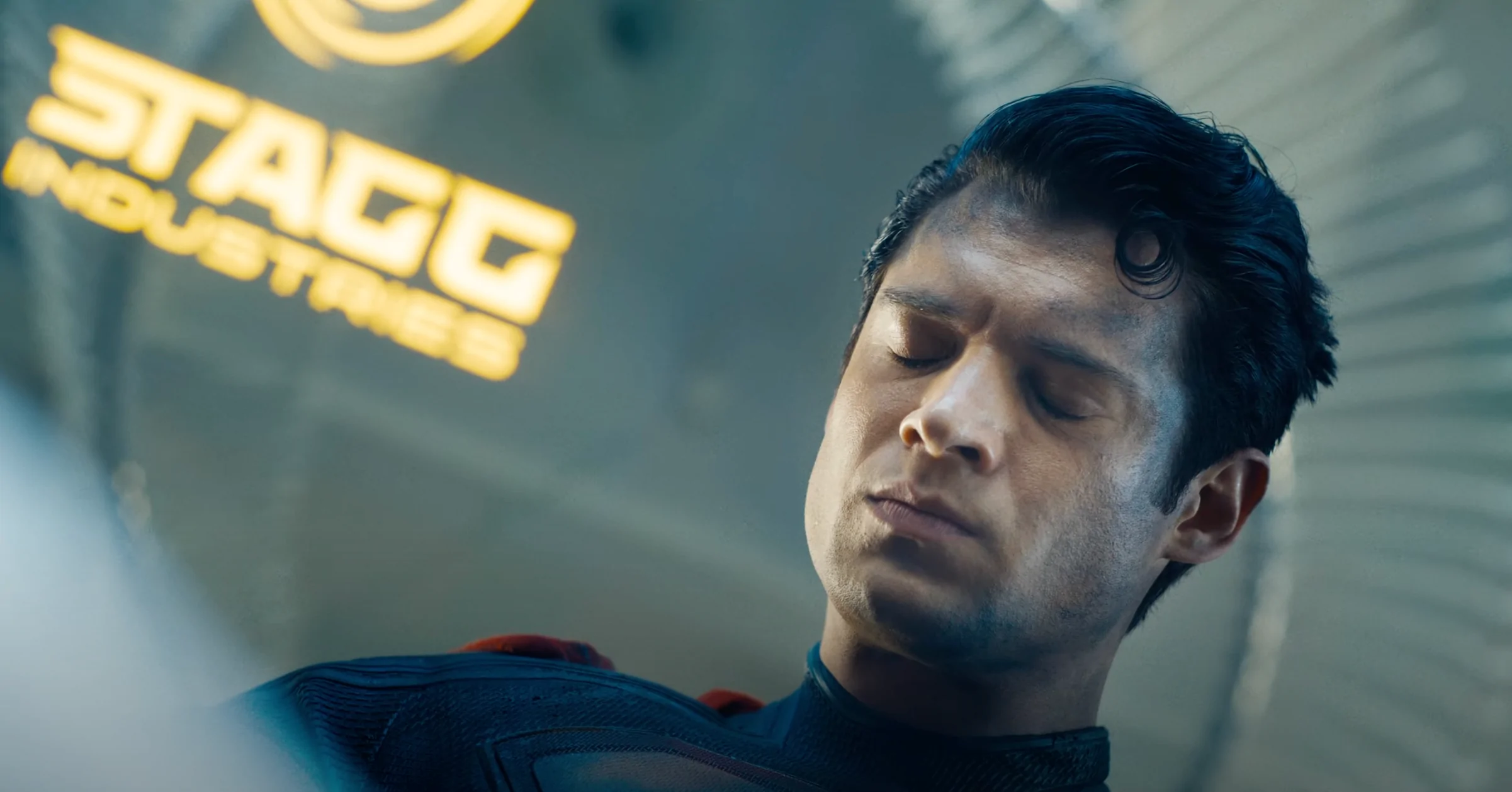
Considering the mixed data available, what exactly is the necessary box office revenue for Superman to be financially successful?
The upcoming “Superman” film in 2025, helmed by James Gunn with David Corenswet portraying the Man of Steel, signifies a crucial re-launch for the DC Universe (DCU) under Warner Bros. Discovery (WBD). Set to hit theaters on July 11, 2025, this movie has been creating quite a stir, with both enthusiastic and critical responses.

By July 14th, only three days after its release in cinemas, the film earned a staggering $122 million within the U.S. and an additional $217 million globally, making it the third-highest opening weekend of the year, following Jurassic World Rebirth and Lilo & Stitch. This strong start has somewhat eased worries about the superhero genre’s wane in popularity post-lockdown, but doubts remain.
What were the total production and promotion expenses for Superman? To achieve financial success, how much revenue must Superman generate? This examination is based on reliable data from official documents, industry assessments, statements from James Gunn, and credible sources to deliver a transparent, referenced calculation of the profitability threshold for Superman.
Production Budget: Navigating Rumors and Tax Incentives
Discussion about the budget for the movie “Superman” has been a hot topic since before filming began. Early figures, disclosed in applications for tax credits submitted to the Ohio Motion Picture Tax Credit program, showed an estimated total spending of $363.8 million. These submissions, as reported by media outlets such as “The Hollywood Reporter“, hinted that “Superman” might be one of the most costly films ever made, possibly surpassing the budgets for Marvel’s movies “Avengers: Infinity War” and “Endgame” if not accounted for incentives.

Instead, they argue that this high number doesn’t account for the tax savings from various filming sites, once taxes are factored in.
The production budget for this project is estimated to be $225 million, a figure confirmed by various sources such as The Wall Street Journal, IMDb, and Box Office Mojo. This estimate takes into account common industry practices that allow for significant reductions in costs through tax incentives, ranging from 10% to over 30%.

James Gunn has been quite outspoken in challenging the higher budget estimations. In a recent social media update, he questioned the source of this information, saying, “I’m curious to know, how on earth do they believe they’ve uncovered our actual budget?
Marketing Campaign: A High-Flying Push
I can’t help but marvel at the grand scale of marketing for Superman! It wasn’t just a local affair; it was a worldwide spectacle. I saw Roku home screen ads that made me feel like I could reach out and touch the Man of Steel. Times Square transformations turned the city into his urban fortress. Global trailers built anticipation, and I felt privileged to witness them. Even brands as renowned as Samsung, Amazon, and Progressive were drawn into his orbit, partnering with him to create an unforgettable experience for fans like me.

Initially, experts in the industry anticipated that this campaign would cost around $200 million, which is higher than the usual $150 million spent on summer blockbusters. This substantial investment by WBD signifies their attempt to rekindle enthusiasm for the DC brand, given the competition from Marvel.
On the other hand, later reports from Variety adjusted the figure down to $100 million, implying that the initial estimates might have been inflated or encompassing a wider scope of promotional partnerships.

In my assessment, I’ll take into account the $200 million figure as a potential maximum, largely due to its frequent mention in previous reports, while keeping in mind the variations that exist in these estimates.
Total Costs: Adding It Up
Merging a production cost of $225 million and a potential marketing expense of $200 million gives us around $425 million in total costs. However, if the lower marketing cost of $100 million is correct, then we’re looking at approximately $325 million instead.

Extra expenses like printing and residual advertising might increase the total, yet these are usually included when calculating marketing budgets.
The Superman Break-Even Point: Beyond the Headlines
Calculations for box office break-even points factor in the revenue shares from cinemas. In the United States, studios typically keep around 50-55% of the total earnings, while overseas, they retain approximately 40-45%. This means that a film must earn roughly double or even 2.5 times its overall production costs to cover its expenses and start making profits.

For Superman, using the $425 million total:
- At 2x: $850 million worldwide needed.
- At 2.5x (conservative, factoring in higher international cuts): $1.06 billion.
In simpler terms, the benchmark for a successful Hollywood movie has been adjusted downward by some. One group argues that a movie should gross at least $500 million worldwide, focusing on international sales targets. On the other hand, others suggest a threshold of $562.5 million, which is 2.5 times the production cost but excludes marketing expenses.
According to Gunn, rumors suggesting a $700 million requirement for the film’s budget are baseless and exaggerated. He believes that the film, titled Superman, doesn’t necessarily have to be as massive as some are claiming in order to support the DC Universe.

Nonetheless, there’s a considerable amount of doubt surrounding the supposed $500 million breakeven point in the industry. To be honest, it appears rather minimal when considering theater splits.
In essence, for every dollar earned in gross revenue at $500 million, the studio would receive between $225 and $250 million back, which is significantly below the break-even point. The suggested figure of $700 million, labeled as absurd by Gunn, seems to be more consistent with a 2x multiplier, but could still fall short if marketing expenses are higher than projected.
Conclusion: Defining Success Beyond Dollars
As a fan, it appears that for Superman to become a lucrative financial triumph, it would likely need to exceed the global box office revenue of $600 million, approaching the break-even point on reported production expenses. Hitting $700-$850 million would not only ensure profitability but also justify the decision to reboot the franchise.
If marketing had approached $100 million (a figure that seems improbable given the scale of this project), it would reduce the total cost to around $500-$650 million.

Success goes beyond just numbers. Additional income sources like merchandise, streaming, and sequels, as well as cultural influence, are significant factors. Gunn’s downplaying of excessive expectations indicates that Warner Bros. Discovery is aiming for a long-lasting franchise rather than a quick one-time profit from a single film.

As a movie enthusiast, I’m eagerly anticipating the release of Superman in 2025. While it seems like it might not quite reach the billion-dollar mark, it could still be just what DC needs to regain some momentum in the cinematic landscape. Only time will tell if it manages to break even or fly even higher – and I can’t wait to find out!
Read More
- Hazbin Hotel season 3 release date speculation and latest news
- FC 26 reveals free preview mode and 10 classic squads
- Dancing With The Stars Fans Want Terri Irwin To Compete, And Robert Irwin Shared His Honest Take
- Red Dead Redemption Remaster Error Prevents Xbox Players from Free Upgrade
- Where Winds Meet: Best Weapon Combinations
- Meet the cast of Mighty Nein: Every Critical Role character explained
- Where Winds Meet: How To Defeat Shadow Puppeteer (Boss Guide)
- Is There a Smiling Friends Season 3 Episode 9 Release Date or Part 2?
- Walking Towards State Estimation: A New Boundary Condition Approach
- Where to Find Tempest Blueprint in ARC Raiders
2025-07-14 20:00